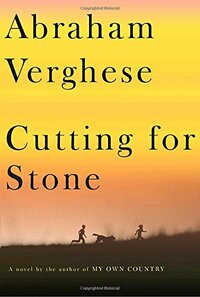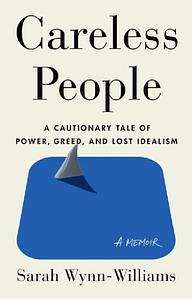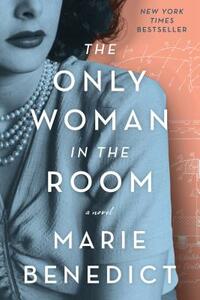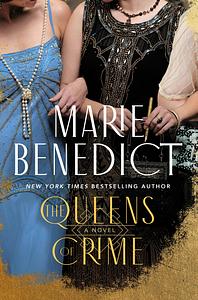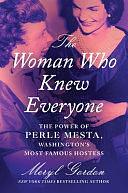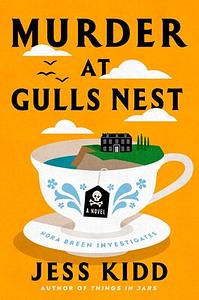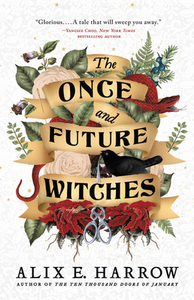Take a photo of a barcode or cover
laurieb755's Reviews (784)
adventurous
emotional
informative
reflective
sad
tense
medium-paced
Plot or Character Driven:
Character
Strong character development:
Yes
Loveable characters:
Complicated
To know what this story is about start with the description listed on StoryGraph, which I believe comes from the back cover of the paperback version of the book. Perhaps my comments will deepen that description.
This story unfolds mostly from the perspective of Marion Stone, the older of the twins but only older due to a fluke in how they were delivered. Marion and his identical twin brother Shiva grow up alongside Genet, the daughter of Rosina, one of the many who work at Missing. The twins will be raised by Hema, an obstetrician, and Gosh, an internist turned surgeon, a doctor of many trades. They will also be raised by everyone who works at Missing, a hospital run by Matron and funded by Baptist groups in the States. Missing, which originally was Mission but there's no counting for pronunciation so Missing it became, was home to a group of dedicated doctors and people who cared for anyone that came to their doors, from the poor to the wealthy to the political.
This is the story of Marion and Shiva and the people that surrounded them throughout their lives. For Shiva that meant those at Missing and in Ethiopia. For Marion that meant much the same with the addition of seven years spent in the United States. As all autobiographical stories do, this one begins with the story of Sister Mary Joseph Praise, their mother, and Thomas Stone, their father, for there is no autobiography without the parents who have brought the child into the world. Take note, that sentence alone will prove true but not true…
Thomas Stone will have an outsize influence on his sons despite their being raised by Hema and Gosh, who were both influenced by Thomas Stone. All their lives will unfold against the backdrop of Ethiopia, Emperor Haile Selassie, Mengistu–a dictator, an attempted coup, and attempted hijackings of Ethiopian Airlines jets in protest of the attempt to annex Eritrea. One item to note: Ethiopia was invaded by Italian forces that wound up ruling the country from 1936 to 1941, leaving an indelible Italian imprint on aspects of Ethiopian life.
Marion's story thoroughly absorbed me; Abraham Verghese (https://www.abrahamverghese.org/), a doctor in his own right, has written an immersive gripping story.
This story unfolds mostly from the perspective of Marion Stone, the older of the twins but only older due to a fluke in how they were delivered. Marion and his identical twin brother Shiva grow up alongside Genet, the daughter of Rosina, one of the many who work at Missing. The twins will be raised by Hema, an obstetrician, and Gosh, an internist turned surgeon, a doctor of many trades. They will also be raised by everyone who works at Missing, a hospital run by Matron and funded by Baptist groups in the States. Missing, which originally was Mission but there's no counting for pronunciation so Missing it became, was home to a group of dedicated doctors and people who cared for anyone that came to their doors, from the poor to the wealthy to the political.
This is the story of Marion and Shiva and the people that surrounded them throughout their lives. For Shiva that meant those at Missing and in Ethiopia. For Marion that meant much the same with the addition of seven years spent in the United States. As all autobiographical stories do, this one begins with the story of Sister Mary Joseph Praise, their mother, and Thomas Stone, their father, for there is no autobiography without the parents who have brought the child into the world. Take note, that sentence alone will prove true but not true…
Thomas Stone will have an outsize influence on his sons despite their being raised by Hema and Gosh, who were both influenced by Thomas Stone. All their lives will unfold against the backdrop of Ethiopia, Emperor Haile Selassie, Mengistu–a dictator, an attempted coup, and attempted hijackings of Ethiopian Airlines jets in protest of the attempt to annex Eritrea. One item to note: Ethiopia was invaded by Italian forces that wound up ruling the country from 1936 to 1941, leaving an indelible Italian imprint on aspects of Ethiopian life.
Marion's story thoroughly absorbed me; Abraham Verghese (https://www.abrahamverghese.org/), a doctor in his own right, has written an immersive gripping story.
fast-paced
Egads, if you have a Facebook account and read this book it will likely make you want to delete all your data and your account as fast as possible! I do not have an account, but if I did that would have been my reaction. Sarah Wynn-Williams tells a fast-paced story that begins with her being attacked by a shark, which might surprise you (as it did me) for how her parents dealt with her experience.
What you learn about Wynn-Williams is that she is fearless, resilient, and willing to dive in and tackle that which has to be tackled. Indeed, she not only returned to the waters in which she was attacked by the shark, she went back into the water. This gives you an idea of what is to come in terms of her responses to each of the events that form the story she shares about Mark Zuckerberg, Sheryl Sandberg and the people she regularly worked with at Facebook.
The upshot is a grueling story that, with each chapter, becomes more absurd and more disgusting. You will learn about rules and breaking them, laws and how the Facebook folks felt about them, other countries and their concerns and what the heads of states are willing to do (or not do). Ultimately you will form your own impression. Suffice it to say that Facebook took pains to prevent Sarah Wynn-Williams from promoting her book, but not before she was able to be interviewed on NPR (an audio interview), in The Guardian and several other print entities.
By the end of the book I was fully disgusted, and not just with the mucky-mucks at Facebook. They are indicative of the power and fear that drives the vast majority of the United States government. Both entities are run by power hungry men with no understanding of or care for the impact their approaches and policies have on the rest of humanity. And no, this is not an overstatement.
What you learn about Wynn-Williams is that she is fearless, resilient, and willing to dive in and tackle that which has to be tackled. Indeed, she not only returned to the waters in which she was attacked by the shark, she went back into the water. This gives you an idea of what is to come in terms of her responses to each of the events that form the story she shares about Mark Zuckerberg, Sheryl Sandberg and the people she regularly worked with at Facebook.
The upshot is a grueling story that, with each chapter, becomes more absurd and more disgusting. You will learn about rules and breaking them, laws and how the Facebook folks felt about them, other countries and their concerns and what the heads of states are willing to do (or not do). Ultimately you will form your own impression. Suffice it to say that Facebook took pains to prevent Sarah Wynn-Williams from promoting her book, but not before she was able to be interviewed on NPR (an audio interview), in The Guardian and several other print entities.
By the end of the book I was fully disgusted, and not just with the mucky-mucks at Facebook. They are indicative of the power and fear that drives the vast majority of the United States government. Both entities are run by power hungry men with no understanding of or care for the impact their approaches and policies have on the rest of humanity. And no, this is not an overstatement.
adventurous
dark
informative
tense
medium-paced
Plot or Character Driven:
Character
Loveable characters:
No
I have become a fan of Marie Benedict and her historical fiction books, however this book did not grab me in the same way as others of her books that I have read. The attempt to write in Hedy's voice did not feel natural to me and I would have liked more information on the research done by Benedict. For instance, the relationship Hedy had with her first husband sounded idyllic at first but soon descended into one of control and physical violence on his part. How much of their lives together was described based on sources, were there first hand references to how Hedy was treated and what she experienced?
At the same time, Benedict portrayed a woman with enormous resilience and talent, both on the stage, in film and in the realm of science. Perhaps Benedict's job was well done in that the book made me want to read an in-depth biography (as opposed to historical fiction) of Hedy Lamarr.
There are multiple sites where you can learn more about Hedy Lamarr: https://www.hedylamarr.com/, https://www.womenshistory.org/education-resources/biographies/hedy-lamarr, https://www.invent.org/inductees/hedy-lamarr and https://en.wikipedia.org/wiki/Hedy_Lamarr
At the same time, Benedict portrayed a woman with enormous resilience and talent, both on the stage, in film and in the realm of science. Perhaps Benedict's job was well done in that the book made me want to read an in-depth biography (as opposed to historical fiction) of Hedy Lamarr.
There are multiple sites where you can learn more about Hedy Lamarr: https://www.hedylamarr.com/, https://www.womenshistory.org/education-resources/biographies/hedy-lamarr, https://www.invent.org/inductees/hedy-lamarr and https://en.wikipedia.org/wiki/Hedy_Lamarr
informative
inspiring
medium-paced
If you do a search for Anand Giridharadas, author, you will see that he is no stranger to writing books that are meant to inform. If you search for The Persuaders you will likely find numerous interviews with him regarding this most recent book. The title says it all. He has interviewed multiple people who are considered to be on the progressive side of issues in his efforts to learn and understand how they do their work.
After reading the book once through I went back and skim read it to take notes on aspects I didn't want to forget or people or organizations that warranted further research. The first chapter, The Waking Among the Woke, introduces the idea of 'broadening the circle'. Another chapter, The Inside-Outside Game, talks about 'the golden gate of retreat' that suggests giving "people who might not change their mind a face-saving way out".
The last three chapters comprise three and a half pages of notes in total. These chapters focus on getting the word out in The Art of Messaging followed by The Vaccine Against Lies and concluding with canvassing by Making Meaning at the Door.
In the sadly polarized world we live in I found many of the techniques helpful in my attempts to understand the why of our situation, particularly in the United States, as well as the how in terms of how to talk with people.
After reading the book once through I went back and skim read it to take notes on aspects I didn't want to forget or people or organizations that warranted further research. The first chapter, The Waking Among the Woke, introduces the idea of 'broadening the circle'. Another chapter, The Inside-Outside Game, talks about 'the golden gate of retreat' that suggests giving "people who might not change their mind a face-saving way out".
The last three chapters comprise three and a half pages of notes in total. These chapters focus on getting the word out in The Art of Messaging followed by The Vaccine Against Lies and concluding with canvassing by Making Meaning at the Door.
In the sadly polarized world we live in I found many of the techniques helpful in my attempts to understand the why of our situation, particularly in the United States, as well as the how in terms of how to talk with people.
adventurous
emotional
informative
inspiring
mysterious
tense
medium-paced
Plot or Character Driven:
Character
Loveable characters:
Yes
I quite enjoyed Marie Benedict's mystery starring Dorothy Sayers(https://www.sayers.org.uk/biography), Agatha Christie (https://www.agathachristie.com/about-christie), Ngaio Marsh (9https://www.ngaiomarsh.org/ngaio-marsh), Margery Allingham (https://margeryallingham.com/about/) and Baroness Emma Orczy (https://en.wikipedia.org/wiki/Baroness_Orczy); the Queens of Crime not just as the book title suggests but also during their actual lives.
Having read multiple books by Marie Benedict I am comfortable stating she is a master at writing historical fiction and in the course of doing so bringing to life characters who were actual flesh and blood people. She follows fact as much as it is available and crafts the fiction when she doesn't have the facts or wants to take the story in a direction other than actually occurred. Such is the case with this book, the Queens of Crime. As always when reading historical fiction, it is important and edifying to read the Author's Note at the end of the story. The heart of Queens of Crime revolves around the mysterious disappearance of May Daniels, a nurse, while she was visiting Bologne, France. (Learn more about Nurse Daniels in this podcast https://www.shedunnitshow.com/nursedanielstranscript/)
Benedict places Dorothy Sayers as the protagonist, a mystery writer (Lord Peter Whimsy series) who actually did try to solve the disappearance of May Daniels. Both in real life and the life of this story, Sayers created the Queens of Crime (https://newlinesmag.com/essays/how-the-queens-of-crime-fiction-developed-a-modern-myth/), which was comprised of the female mystery writers of their time. The Queens of Crime was created as a small group of women mystery writers who were part of the male dominated Detection Club, also created by Sayers. In the context of the story Sayers suggests to the Queens that they try to solve a real life crime in order to persuade the male authors that they were "anything but eminently worthy" of being part of the Detection Club.
To that end we are privy to multiple mysteries – that of May Daniels, Agatha Christie's real life mystery, the (real life) mystery that Dorothy Sayers tries to keep hidden from her friends, and the mysteries she hints at of the other Queens of Crime. I found this to be every bit as good those mysteries written by professed authors of the genre.
You can watch a February 2025 interview of Marie Benedict hosted by the Gwinnett County Public Library located in Georgia: https://www.youtube.com/watch?v=7fiJ00_JcsQ.
Having read multiple books by Marie Benedict I am comfortable stating she is a master at writing historical fiction and in the course of doing so bringing to life characters who were actual flesh and blood people. She follows fact as much as it is available and crafts the fiction when she doesn't have the facts or wants to take the story in a direction other than actually occurred. Such is the case with this book, the Queens of Crime. As always when reading historical fiction, it is important and edifying to read the Author's Note at the end of the story. The heart of Queens of Crime revolves around the mysterious disappearance of May Daniels, a nurse, while she was visiting Bologne, France. (Learn more about Nurse Daniels in this podcast https://www.shedunnitshow.com/nursedanielstranscript/)
Benedict places Dorothy Sayers as the protagonist, a mystery writer (Lord Peter Whimsy series) who actually did try to solve the disappearance of May Daniels. Both in real life and the life of this story, Sayers created the Queens of Crime (https://newlinesmag.com/essays/how-the-queens-of-crime-fiction-developed-a-modern-myth/), which was comprised of the female mystery writers of their time. The Queens of Crime was created as a small group of women mystery writers who were part of the male dominated Detection Club, also created by Sayers. In the context of the story Sayers suggests to the Queens that they try to solve a real life crime in order to persuade the male authors that they were "anything but eminently worthy" of being part of the Detection Club.
To that end we are privy to multiple mysteries – that of May Daniels, Agatha Christie's real life mystery, the (real life) mystery that Dorothy Sayers tries to keep hidden from her friends, and the mysteries she hints at of the other Queens of Crime. I found this to be every bit as good those mysteries written by professed authors of the genre.
You can watch a February 2025 interview of Marie Benedict hosted by the Gwinnett County Public Library located in Georgia: https://www.youtube.com/watch?v=7fiJ00_JcsQ.
Actually, this is more like a 4.99. Nonetheless, this is not a book for bedtime reading so I knew it wouldn't get started till the next morning. But then I was hooked after reading the first sentence and my interest never waned. According to the questions I answered when creating my StoryGraph account, this book does not mesh with my interests. Well, it does mesh because I like good mysteries; I just don't like violent mysteries and the violence in this story was not upsetting.
Cam (short for Camilla) is successful in her work as an agent for writers. After a glorious seven month maternity leave she is slated to return to her office, and it is that morning when her husband of four years, Luke, goes missing. Luke is a successful ghost writer, meaning he writes other people's stories with them. Cam doesn't know he is actually missing, only that he isn't home when she wakes. She is a bit annoyed he isn't there to join in taking their daughter Polly to daycare or to assuage her nerves about leaving Polly and returning to work. And yet…
Cam has a sixth sense about Luke and it turns out she is well-attuned to her husband (and he to her). What follows is a story of hostage taking, disappearing, wondering and believing that never stops. Niall is a hostage negotiator who lives for his job, for which he is rarely needed until this one morning when there is a hostage situation in a warehouse.
I am currently part of a grand jury (we hear many different cases, and our role is simply to determine if there is enough evidence to bring a case to trial). Prior to serving we were shown a video on bias, as it is all too easy to let bias intervene when trying to make decisions based on facts and evidence alone. I will leave you with that teaser as you make your way through this tale. My only advice, don't read before bedtime. Oh, and Gillian McAllister (https://gillianmcallister.com/about/) knows how to write mysteries, even if this is the only one I've yet to read.
Cam (short for Camilla) is successful in her work as an agent for writers. After a glorious seven month maternity leave she is slated to return to her office, and it is that morning when her husband of four years, Luke, goes missing. Luke is a successful ghost writer, meaning he writes other people's stories with them. Cam doesn't know he is actually missing, only that he isn't home when she wakes. She is a bit annoyed he isn't there to join in taking their daughter Polly to daycare or to assuage her nerves about leaving Polly and returning to work. And yet…
Cam has a sixth sense about Luke and it turns out she is well-attuned to her husband (and he to her). What follows is a story of hostage taking, disappearing, wondering and believing that never stops. Niall is a hostage negotiator who lives for his job, for which he is rarely needed until this one morning when there is a hostage situation in a warehouse.
I am currently part of a grand jury (we hear many different cases, and our role is simply to determine if there is enough evidence to bring a case to trial). Prior to serving we were shown a video on bias, as it is all too easy to let bias intervene when trying to make decisions based on facts and evidence alone. I will leave you with that teaser as you make your way through this tale. My only advice, don't read before bedtime. Oh, and Gillian McAllister (https://gillianmcallister.com/about/) knows how to write mysteries, even if this is the only one I've yet to read.
hopeful
inspiring
reflective
I'm of a mixed mind as to how to think about Mariann Edgar Budde's (https://edow.org/about/bishop-mariann/) contemplative book. After seeing the clip of Bishop Budde speaking at the National Prayer Breakfast in January 2025 (https://www.youtube.com/watch?v=wfP0owvJCs8) I was motivated to learn more about her, which is how I found this book. Certainly, what she said – with the leadership of the United States sitting in front of her – required courage and bravery. As with her action to speak at that service, this book is illustrated with stories requiring courage and bravery, and from all of that I take inspiration.
Budde begins with a recounting of the events from June 1, 2020 that led her to wind up a national figure as a result of her speaking out against an action taken by then President Trump. From that groundwork Budde presents her teachings in seven chapters, each with a distinctive take: Deciding to Go, Deciding to Stay, Deciding to Start, Accepting What You Do Not Choose, Stepping Up to the Plate, The Inevitable Letdown and The Hidden Virtue of Perseverance. To a certain extent each of these chapter titles speak for themselves, though it is the details of each chapter that provide heft to the titles.
Budde begins with a recounting of the events from June 1, 2020 that led her to wind up a national figure as a result of her speaking out against an action taken by then President Trump. From that groundwork Budde presents her teachings in seven chapters, each with a distinctive take: Deciding to Go, Deciding to Stay, Deciding to Start, Accepting What You Do Not Choose, Stepping Up to the Plate, The Inevitable Letdown and The Hidden Virtue of Perseverance. To a certain extent each of these chapter titles speak for themselves, though it is the details of each chapter that provide heft to the titles.
As with each of the chapters, the Epilogue opens with a quote:
The brave man is not he who does not feel afraid, but he who conquers that fear. –Nelson Mandela
Fear can take several forms and is a powerful motivator both for action or inaction. (https://www.paulekman.com/universal-emotions/what-is-fear/) Yes, I've taken inspiration from Bishop Budde's words. I also know that bravery is a skill that has to be nurtured and practiced so that it becomes possible to conquer fear.
informative
medium-paced
The Woman Who Knew Everyone got off to a slow start primarily because at first it felt like I was simply reading a chronological list of events. I prefer reading about history when the author conveys the people, places and events in the form of a story, which in turn brings the history alive. To that end, I felt author Meryl Gordon took a bit too long to find her stride. However, between the fascinating Perle Mesta and Gordon eventually finding her stride, I became hooked.
Known in Washington D.C. as ‘the hostess with the mostess’ Perle was indefatigable to the very end (such end coming at age 92 in March 1975). I was intrigued by her life, her voracious appetite for wanting (needing) to be of use in a way that meshed with her personality and her uncanny ability to bring people together from multiple professions and differing political viewpoints. You can get a small sense of her life in this 8 minute video (https://www.youtube.com/watch?v=RfkmImzCchs), which includes footage from the musical Call Me Madam (based on Perle’s life) as well as footage of Perle. I appreciated being able to see her in action.
One of Perle's particular passions was supporting, with the hopes of passing, the ERA (Equal Rights Amendment). Her efforts with the cause began in the 1930s and, sadly, to this day has yet to become part of the Constitution. She considered herself an Oklahoman and the Oklahomans adopted her as one of their own, listing her in the Oklahoma Hall of Fame: https://perle-mesta.webnode.page/
Perle’s beloved husband, George Mesta, died young and coupled with money inherited from her father Perle was left a rich widow. She joined forces with her brother and sister, the three making savvy investments with their inheritances. From these investments Perle had a strong financial base that she used to build her entertaining life. Friends with multiple presidents, it was President Harry Truman who sent Perle to Luxembourg after World War Two as the first female envoy. While she would have preferred to be called an Ambassador, nontheless Perle made the most out of her position, charming the people of Luxembourg, entertaining G.I.s, providing holiday parties for orphaned children, and entertaining Ike and Mamie Eisenhower when Ike was the NATO Supreme Allied Commender in Europe. Apparently he was an excellent cook and he and Perle would spend hours cooking up a storm in the kitchen each time he visited.
Perle became involved with politics not as someone who ran for office but as a bringer together of people at her many parties, especially during the Presidential Conventions, of which she attended many. Perhaps that should not be a surprise given that she was, in her time, “Washington’s most famous hostess.”
Perle lived in New York City, Newport, RI, and Washington, as well as short stays elsewhere in the States and, as noted before, Luxembourg. She also spent time in London and three months on an invited tour of the Soviet Union not long after Stalin died. Along with members of her family she was an avid Christian Scientist, praying daily and attending Church on Sundays. Alas, in times of illness Christian Science utilizes prayer rather than doctors and medicine. The result of that approach was several members of Perle’s family died unnecessairly. There is much more to her story than I relay here and the best way to learn about her is to read the book!
Known in Washington D.C. as ‘the hostess with the mostess’ Perle was indefatigable to the very end (such end coming at age 92 in March 1975). I was intrigued by her life, her voracious appetite for wanting (needing) to be of use in a way that meshed with her personality and her uncanny ability to bring people together from multiple professions and differing political viewpoints. You can get a small sense of her life in this 8 minute video (https://www.youtube.com/watch?v=RfkmImzCchs), which includes footage from the musical Call Me Madam (based on Perle’s life) as well as footage of Perle. I appreciated being able to see her in action.
One of Perle's particular passions was supporting, with the hopes of passing, the ERA (Equal Rights Amendment). Her efforts with the cause began in the 1930s and, sadly, to this day has yet to become part of the Constitution. She considered herself an Oklahoman and the Oklahomans adopted her as one of their own, listing her in the Oklahoma Hall of Fame: https://perle-mesta.webnode.page/
Perle’s beloved husband, George Mesta, died young and coupled with money inherited from her father Perle was left a rich widow. She joined forces with her brother and sister, the three making savvy investments with their inheritances. From these investments Perle had a strong financial base that she used to build her entertaining life. Friends with multiple presidents, it was President Harry Truman who sent Perle to Luxembourg after World War Two as the first female envoy. While she would have preferred to be called an Ambassador, nontheless Perle made the most out of her position, charming the people of Luxembourg, entertaining G.I.s, providing holiday parties for orphaned children, and entertaining Ike and Mamie Eisenhower when Ike was the NATO Supreme Allied Commender in Europe. Apparently he was an excellent cook and he and Perle would spend hours cooking up a storm in the kitchen each time he visited.
Perle became involved with politics not as someone who ran for office but as a bringer together of people at her many parties, especially during the Presidential Conventions, of which she attended many. Perhaps that should not be a surprise given that she was, in her time, “Washington’s most famous hostess.”
Perle lived in New York City, Newport, RI, and Washington, as well as short stays elsewhere in the States and, as noted before, Luxembourg. She also spent time in London and three months on an invited tour of the Soviet Union not long after Stalin died. Along with members of her family she was an avid Christian Scientist, praying daily and attending Church on Sundays. Alas, in times of illness Christian Science utilizes prayer rather than doctors and medicine. The result of that approach was several members of Perle’s family died unnecessairly. There is much more to her story than I relay here and the best way to learn about her is to read the book!
adventurous
mysterious
sad
medium-paced
Plot or Character Driven:
A mix
Strong character development:
Yes
Diverse cast of characters:
Yes
This book was released just last month and has yet to appear on Jess Kidd’s website (at least as of this writing, 7 April 2025). http://jesskidd.com/ Having checked my review of another Jess Kidd book I read, Things in Jars, I smiled to see that both stories had me thinking similar thoughts. The first is that I sat for far too long reading (a good thing, story-wise, a not-so-comfortable thing for a body that is happier moving. ;-)) The second is that both stories started out gruesome sounding, almost (but not quite) getting me to stop before truly starting.
Am glad to say I stayed with both stories. Murder at Gulls Nest is the first in what is purported to become a series chronicling Nora Breen, 30 years living in a monastery only to determine for herself that it was time to leave, partially to search for her friend, another woman who left the monastery after a far shorter stay, and partially because Nora’s ties to God seem frayed.
Nora is a naturally inquisitive person, a good listener, a steady friend and a skilled nurse. She takes herself off to Gulls Nest, a somewhat but not totally down-in-the-dumps boarding house by the sea in Kent, England. (Kent is a real place, Gore-on-Sea is not, according to my research. I’m always curious if places truly exist or are fictional based on bits and pieces of actual places.) Reluctant to divulge who she really is and why she has arrived, Nora settles in and gets to somewhat know the other guests. It seems everyone has a backstory that is not easily shared (not unlike Nora's…)
Frustrated to not find out any helpful information about her friend Frieda, Nora heads into town to take up the matter of a missing person with Inspector Rideout. What follows is a budding mutually respectful relationship (and perhaps the twinkle of something more possible…) as they work to solve Freida’s disappearance along with, alas, several murders that take place at Gulls Nest while Nora is living there.
Am glad to say I stayed with both stories. Murder at Gulls Nest is the first in what is purported to become a series chronicling Nora Breen, 30 years living in a monastery only to determine for herself that it was time to leave, partially to search for her friend, another woman who left the monastery after a far shorter stay, and partially because Nora’s ties to God seem frayed.
Nora is a naturally inquisitive person, a good listener, a steady friend and a skilled nurse. She takes herself off to Gulls Nest, a somewhat but not totally down-in-the-dumps boarding house by the sea in Kent, England. (Kent is a real place, Gore-on-Sea is not, according to my research. I’m always curious if places truly exist or are fictional based on bits and pieces of actual places.) Reluctant to divulge who she really is and why she has arrived, Nora settles in and gets to somewhat know the other guests. It seems everyone has a backstory that is not easily shared (not unlike Nora's…)
Frustrated to not find out any helpful information about her friend Frieda, Nora heads into town to take up the matter of a missing person with Inspector Rideout. What follows is a budding mutually respectful relationship (and perhaps the twinkle of something more possible…) as they work to solve Freida’s disappearance along with, alas, several murders that take place at Gulls Nest while Nora is living there.
adventurous
dark
inspiring
mysterious
tense
fast-paced
Plot or Character Driven:
A mix
Strong character development:
Yes
Whoa. There is so much about this story that could be discussed but I will focus on just two items. First, the Eastwood Sisters (Juniper, Bella and Agnes), who are impressive, fiery, strong, determined and - especially given the current situation in the United States - a role model for remembering what it means to stand up for oneself. Second, the question - is (was) a witch simply a person who wants (wanted) for themself to be treated kindly, fairly and with respect as a co-equal to others?
—
I read Alix Harrow’s previous book The Ten Thousand Doors of January but did not reread my review (https://app.thestorygraph.com/reviews/4e2e7e40-d48d-4217-afd4-10268049d2f0) till just now. Harrow’s imagination continues to soar, her rendering of people and place being highly evocative; I watched this story as the movie played out in my mind’s eye. As with her previous book, at times it seemed like chunks of words could be chopped from the narrative with no harm done to the flow of story. Likewise, just when I thought I knew what would happen next, something else occurred instead. I find much reading enjoyment in not being able to discern the plot in advance!
Back to the idea of witching…a third question arises - if one is treated as lesser than whole, does one have not only the right but the responsibility to stand up for oneself and also find a way to stop that 'lessering behaviour' being inflicted again as well as against others? If yes, is that responsibility to oneself only or to others, as well. Throughout my reading of this 513 page book I could not help but think of all that is happening in my country, it being April 2025. Spurred on by the book’s dedication, ending, and the author’s Acknowledgments I will take hope, gather strength, and recite the words. :-)
Finally, I look forward to seeing what Alix E Harrow (https://alixeharrow.wixsite.com/author) turns out next! (PS I started another of her books, Starling House, but even for me it was a bit too gothic a tale to finish. Nonetheless, it did speak to her phenomenal imagination!)
—
I read Alix Harrow’s previous book The Ten Thousand Doors of January but did not reread my review (https://app.thestorygraph.com/reviews/4e2e7e40-d48d-4217-afd4-10268049d2f0) till just now. Harrow’s imagination continues to soar, her rendering of people and place being highly evocative; I watched this story as the movie played out in my mind’s eye. As with her previous book, at times it seemed like chunks of words could be chopped from the narrative with no harm done to the flow of story. Likewise, just when I thought I knew what would happen next, something else occurred instead. I find much reading enjoyment in not being able to discern the plot in advance!
Back to the idea of witching…a third question arises - if one is treated as lesser than whole, does one have not only the right but the responsibility to stand up for oneself and also find a way to stop that 'lessering behaviour' being inflicted again as well as against others? If yes, is that responsibility to oneself only or to others, as well. Throughout my reading of this 513 page book I could not help but think of all that is happening in my country, it being April 2025. Spurred on by the book’s dedication, ending, and the author’s Acknowledgments I will take hope, gather strength, and recite the words. :-)
Finally, I look forward to seeing what Alix E Harrow (https://alixeharrow.wixsite.com/author) turns out next! (PS I started another of her books, Starling House, but even for me it was a bit too gothic a tale to finish. Nonetheless, it did speak to her phenomenal imagination!)
